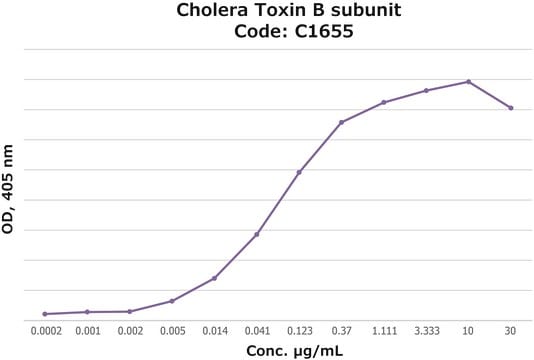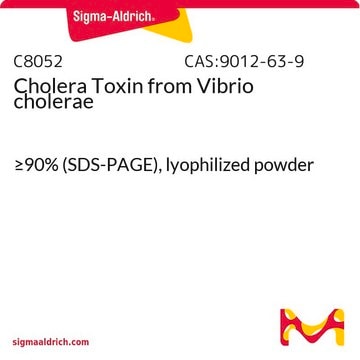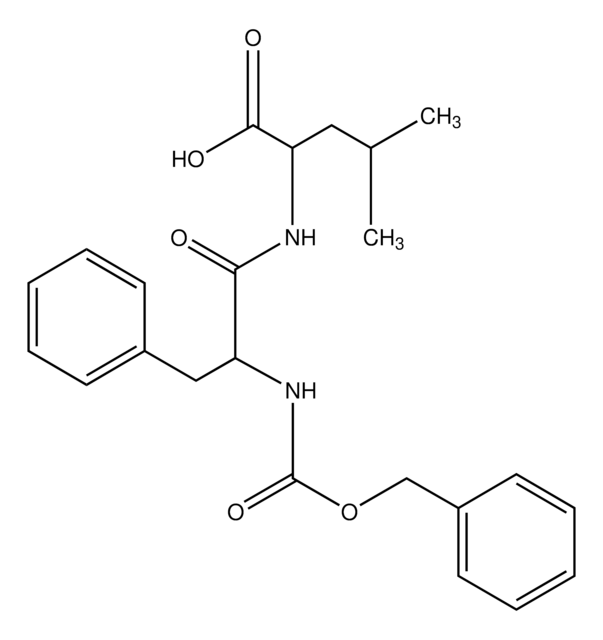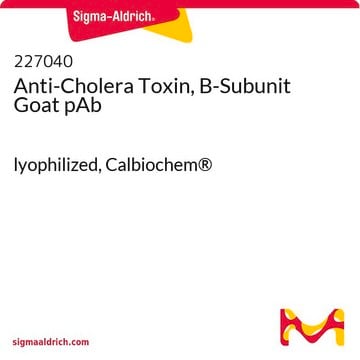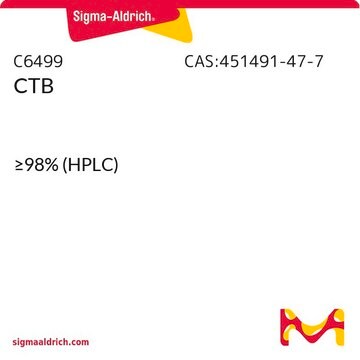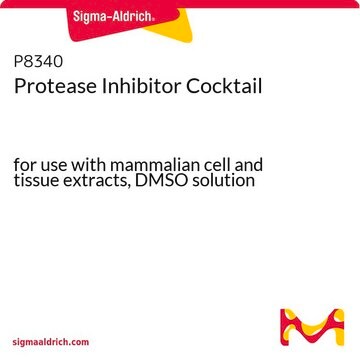C3741
Cholera Toxin B subunit
peroxidase conjugate (Contains ~ 2 moles HRP/mole of CTB. ~100 μg HRP conjugated to ~45 μg CTB), lyophilized powder
Synonim(y):
CTB
Wybierz wielkość
2480,00 zł
Wybierz wielkość
About This Item
2480,00 zł
Polecane produkty
białko sprzężone
peroxidase conjugate (Contains ~ 2 moles HRP/mole of CTB. ~100 μg HRP conjugated to ~45 μg CTB)
Poziom jakości
Formularz
lyophilized powder
peroxidase activity
>100 U/mg, pH 6.0, 20 °C
masa cząsteczkowa
pentamer 57 kDa
~12 kDa
rozpuszczalność
H2O: soluble 10 mg/mL
temp. przechowywania
2-8°C
ciąg SMILES
CCOc1ccccc1C(=O)Nc2ccc(Cl)c(c2)C(F)(F)F
InChI
1S/C16H13ClF3NO2/c1-2-23-14-6-4-3-5-11(14)15(22)21-10-7-8-13(17)12(9-10)16(18,19)20/h3-9H,2H2,1H3,(H,21,22)
Klucz InChI
YDXZSNHARVUYNM-UHFFFAOYSA-N
Szukasz podobnych produktów? Odwiedź Przewodnik dotyczący porównywania produktów
Opis ogólny
Specyficzność
Zastosowanie
- In the isolation of lipid rafts and analysis of B-cell receptor distribution, signaling and ubiquitination.[3]
- In the staining of lipid rafts in brain tissues.[4]
- As a transganglionic tracer to determine the central projections of the anterior ethmoidal nerve in rat.[5]
Działania biochem./fizjol.
Opakowanie
Przestroga
Definicja jednostki
Postać fizyczna
Rekonstytucja
Hasło ostrzegawcze
Danger
Zwroty wskazujące rodzaj zagrożenia
Zwroty wskazujące środki ostrożności
Klasyfikacja zagrożeń
Resp. Sens. 1
Kod klasy składowania
13 - Non Combustible Solids
Klasa zagrożenia wodnego (WGK)
WGK 2
Temperatura zapłonu (°F)
Not applicable
Temperatura zapłonu (°C)
Not applicable
Wybierz jedną z najnowszych wersji:
Masz już ten produkt?
Dokumenty związane z niedawno zakupionymi produktami zostały zamieszczone w Bibliotece dokumentów.
Klienci oglądali również te produkty
Active Filters
Nasz zespół naukowców ma doświadczenie we wszystkich obszarach badań, w tym w naukach przyrodniczych, materiałoznawstwie, syntezie chemicznej, chromatografii, analityce i wielu innych dziedzinach.
Skontaktuj się z zespołem ds. pomocy technicznej